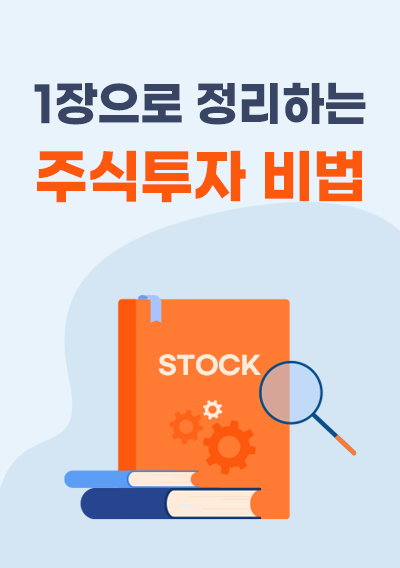SUSTAINABLITY OF SUSTAINABLE FASHION PRODUCTS AND IMPACT OF BRAND NAMES AND CAUSE-RELATED MARKETING ON PURCHASE INTENTION
* 본 문서는 배포용으로 복사 및 편집이 불가합니다.
서지정보
ㆍ발행기관 : 글로벌지식마케팅경영학회(GFMC)
ㆍ수록지정보 : GFMC Session1
ㆍ저자명 : Sookhyun Kim, Hyunshin Na
ㆍ저자명 : Sookhyun Kim, Hyunshin Na
영어 초록
In the fashion industry, designers and researchers have proposed various sustainable fashion products (i.e., sustainability in product development), and retailers have also created many sustainable business practices (i.e., sustainability in distribution). However, according to the previous researches, even though the industry have offered a variety of sustainable designs and retail offers, consumers did not show a positive purchase behavior on the sustainable products. Currently, the gap exists between industry offers for sustainability and consumers’ expectation/acceptance of those offers. This result supports that there are other aspects than environmental protection aspect of the sustainable fashion products that need to be improved and/or be emphasized on to make consumers feel confident in purchasing. To examine consumers’ purchase behavior changes on sustainable fashion products, this study will measure consumers’ equity of sustainability on existing sustainable fashion products with three criteria of sustainable designs proposed by Day and Townsend (1993), which are socially equitable, economically viable, and environmentally benign. Then, consumers’ purchase intention for sustainable fashion products will be measured. The result will show the sustainable fashion product types that currently satisfy consumers so that the industry can concentrate on and develop the types further. In addition, this study will explore the impact of well-known brand names and cause-related marketing whether they would improve consumers’ purchase intention towards sustainable fashion products. No research has studied these two variables for sustainable fashion products as well as the equity of sustainability. Finally, different benefit sought groups will be tested whether they show different acceptance/preference and impact of brand names and cause-related marketing on the sustainable fashion products so that companies can set the appropriate strategies based on their target market’s benefit sought.PROPOSED MODEL AND HYPOTHESES
Based on previous researches, the authors propose a new model shown in the figure 1, and the hypotheses are developed based on the model.
H1. Significant differences in equity of sustainability, purchase intention before and after cause-related marketing and the relationships in the model.
H1-1. Consumers will differently evaluate equity of sustainability of each sustainable fashion product type.
H1-2. Consumers will have different purchase intention on each sustainable fashion product type.
H1-3. Consumers will have different purchase intention on each sustainable fashion product type after cause-related marketing.
H1-4. Equity of sustainability will significantly influence on purchase intention in all sustainable fashion product types.
H1-5. Cause-related marketing will significantly improve purchase intention in all sustainable fashion product types.
H2. Significantly different results in H1 between benefit sought groups.
H2-1. Benefit sought groups will have significantly different equity of sustainability on all sustainable fashion product types.
H2-2. Benefit sought groups will have significantly different purchase intention on all sustainable fashion product types.
H2-3. Benefit sought groups will have significantly different purchase intention on all sustainable fashion product types after cause-related marketing.
H2-4. Benefit sought groups will show a different relationship between equity of sustainability and purchase intention in all sustainable fashion product types.
H2-5. Benefit sought groups will show a different influence of cause-related marketing on purchase intention in all sustainable fashion product types.
H3. Significantly different results in H1 after adding well-known brand names on sustainable fashion product types.
H3-1. Equity of sustainability will be significantly different for all sustainable fashion product types after adding well-known brand names.
H3-2. Purchase intention will be significantly different for all sustainable fashion product types after adding well-known brand names.
H3-3. Purchase intention after cause-related marketing will be significantly different for all sustainable fashion product types after adding well-known brand names.
H3-4. The relationship between equity of sustainability and purchase intention will be different after adding well-known brand names in all sustainable fashion product types.
H3-5. The influence of cause-related marketing on purchase intention will be different after adding well-known brand names in all sustainable fashion product types.
H4. Different results from H2 after adding well-known brand names.
H4-1. The significant difference of equity of sustainability between benefit sought groups will be different after adding well-known brand names in all sustainable fashion product types.
H4-2. The significant difference of purchase intention between benefit sought groups will be different after adding well-known brand names in all sustainable fashion product types.
H4-3. The significant difference of purchase intention after cause-related marketing between benefit sought groups will be different after adding well-known brand names in all sustainable fashion product types.
H4-4. After adding well-known brand names, the result of the relationship between equity of sustainability and purchase intention in each benefit group will be different in all sustainable fashion product types.
H4-5. After adding well-known brand names, the result of the relationship between cause-related marketing and purchase intention in each benefit sought group will be different in all sustainable fashion product types.
RESEARCH METHOD
A simple black dress which is the product silhouette consistently shown through all sustainable fashion product types and relatively low involved when purchasing was selected to minimize the cognitive effort to process/judge the product attributes (Tucker, Rifon, Lee & Reece, 2012). The equity of sustainability is determined as an average score of economic viability, social equity, and environmental responsibility of each sustainable fashion product type. Benefit segments most commonly studied in the previous researches are selected for this study which are price-conscious, fashion-conscious, brand-conscious, convenience-conscious, quality-conscious, self-express, and self-confidence groups. Brand name is a moderator variable to test the brand name effect on participants’ response. Two different versions of questionnaires were distributed. One version shows brand names on the product types, which are selected as reliable brand names from a pretest in terms of quality and credibility, and the other version does not show any brand names on the product types. The reliable brand names are luxury brands such as Ralph Lauren rather than middle to low-priced brands. Both versions include the question for purchase intention before and after cause-related marketing (e.g., “If 10% of this sales is donated to a non-profit organization to preserve our environment, I would buy this item.”). Only female consumers are allowed to participate in the survey because the stimuli are dresses. Surveys were distributed by a commercial survey data collection company. Total 399 surveys were usable (non-brand version, n=190; brand name version, n= 209). The majority of participants are between 25 to 44 years old (22-34 years 49.1%, 35-44 years 16.8%) and has a college degree (college degree 52.6%, graduate school degree 25.8%).
RESULTS & CONCLUSIONS
From the data analysis (see table 1), non-brand companies would have a benefit by offering transformable products in which consumers feel more value than other sustainable fashion product types. When showing luxury brand names, participants evaluated upcycling products as the highest equity of sustainability and purchase intention after cause-related marketing. The zero waste luxury brand product received the highest purchase intention before cause-related marketing and also received a significantly higher equity of sustainability than the non-brand zero waste product. Therefore, it is recommended for luxury brands to show their sustainability practice on the product through labels, especially showing a zero waste production label. The result in all sustainable fashion product types regardless of brand names showed that the higher sustainability, the higher purchase intention. Thus, again, it is important for companies to educate their sustainability practices (e.g., economic, social and environmental values) to consumers through either promotions or labels on the products. For both non-brand and luxury brand products, promoting a donation or support for community/society (i.e., cause-related marketing) on the product would influence consumers' purchase decision when selling the upcycling, recycling and promotion on fashion products. For example, companies could create/include a symbol of their cause-related marketing or include a symbol of a non-profit organization on the sustainable fashion products.
Considering different benefit sought groups, the high fashion involved group scored the variables higher in most sustainable fashion product types in the model than the low fashion involved group did. When companies plan to offer sustainable fashion products, they need to target the high fashion involved group for a better sales outcome. Even though participants perceived that the upcycled product was highly sustainable, they purchased different product types. The high fashion involved group highly intended to purchase the transformable product in the non-brand product types and the animal-free product in luxury brand product types in both before and after cause-related marketing. Luxury brands are the ones typically consume most real animal furs and skins, and this might influenced the participants’ purchase intention. The low fashion involved group were willing to purchase the product with organic materials in both non-brand and luxury brands, but cause-related marketing increased the purchase intention on the most of product types. Companies targeting a low fashion conscious group are suggested developing/promoting organic fashion products and actively promote their community/society involvement.
Regardless of benefit sought groups, higher equity of sustainability generated higher purchase intention. Again, companies need to inform/promote their sustainability practices to consumers through products or media to improve sales. The impact of cause-related marketing on the purchase intention was significant for the low fashion involved group in the upcycling, recycling, promotion on the product, zero waste and transformable products regardless of brand names. Therefore, when companies cannot appeal consumers with their brand names, the cause-related marketing plays an important role. The low fashion involved consumers seem to consider the after-purchase impact on the society than product itself when purchasing sustainable fashion products. The cause-related marketing had less impact for the high fashion involved group on their purchase intention than the low fashion involved group; however, the purchase intention of non-brand upcycling and the upcycling, recycling and promotion on the product for luxury brands have significantly improved after cause-related marketing. Companies, especially luxury brand names, need to include cause-related marketing when selling those product targeting the high fashion involved group.
참고 자료
없음"GFMC Session1"의 다른 논문
 FAST AND SLOW FASHION BRANDS IN DEVELOPING SUSTAINABLE ..6페이지
FAST AND SLOW FASHION BRANDS IN DEVELOPING SUSTAINABLE ..6페이지 “WHAT IF A CELEBRITY AND A BRAND CO-CREATE A NEW COLLEC..7페이지
“WHAT IF A CELEBRITY AND A BRAND CO-CREATE A NEW COLLEC..7페이지 THE INSTAGRAM’S STRATEGY IN ENGAGING THE CUSTOMER’S LOY..3페이지
THE INSTAGRAM’S STRATEGY IN ENGAGING THE CUSTOMER’S LOY..3페이지 THE PARTICULARITIES OF NEW PRODUCT DEVELOPMENT IN THE T..5페이지
THE PARTICULARITIES OF NEW PRODUCT DEVELOPMENT IN THE T..5페이지 THE LONE CHOCOLATE BAR: THE INFLUENCE OF PERCEIVED SCAR..6페이지
THE LONE CHOCOLATE BAR: THE INFLUENCE OF PERCEIVED SCAR..6페이지 ADS AS WORKS OF ART: MEASURING ADVERTISING IMMERSION3페이지
ADS AS WORKS OF ART: MEASURING ADVERTISING IMMERSION3페이지 ECONOMIES OF SMALL: NICHE STRATEGIES AND SUCCESS FACTOR..8페이지
ECONOMIES OF SMALL: NICHE STRATEGIES AND SUCCESS FACTOR..8페이지 THE INFLUENCE OF ONLINE CUSTOMER REVIEWS ON RETAILERS' ..6페이지
THE INFLUENCE OF ONLINE CUSTOMER REVIEWS ON RETAILERS' ..6페이지 IS THE ARTIFICATION PROCESS PERCEIVED BY FINAL CONSUMER..6페이지
IS THE ARTIFICATION PROCESS PERCEIVED BY FINAL CONSUMER..6페이지 THE ODD EVEN PRICE PARADOX IN THE FASHION LUXURY SECTOR6페이지
THE ODD EVEN PRICE PARADOX IN THE FASHION LUXURY SECTOR6페이지




















